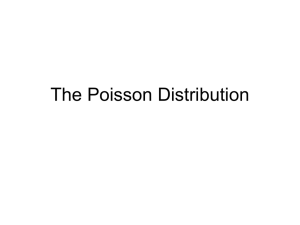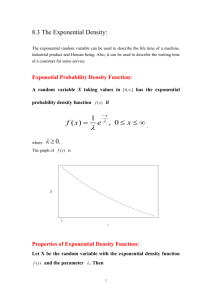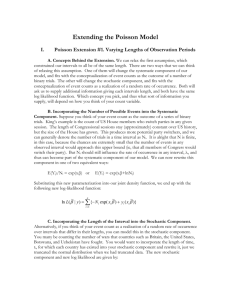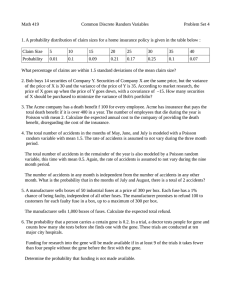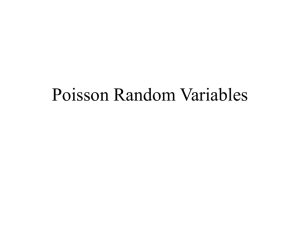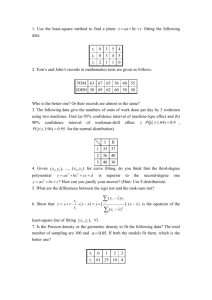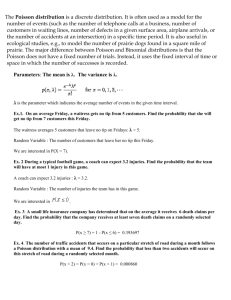Poisson Probability Distribution: Properties & Examples
advertisement
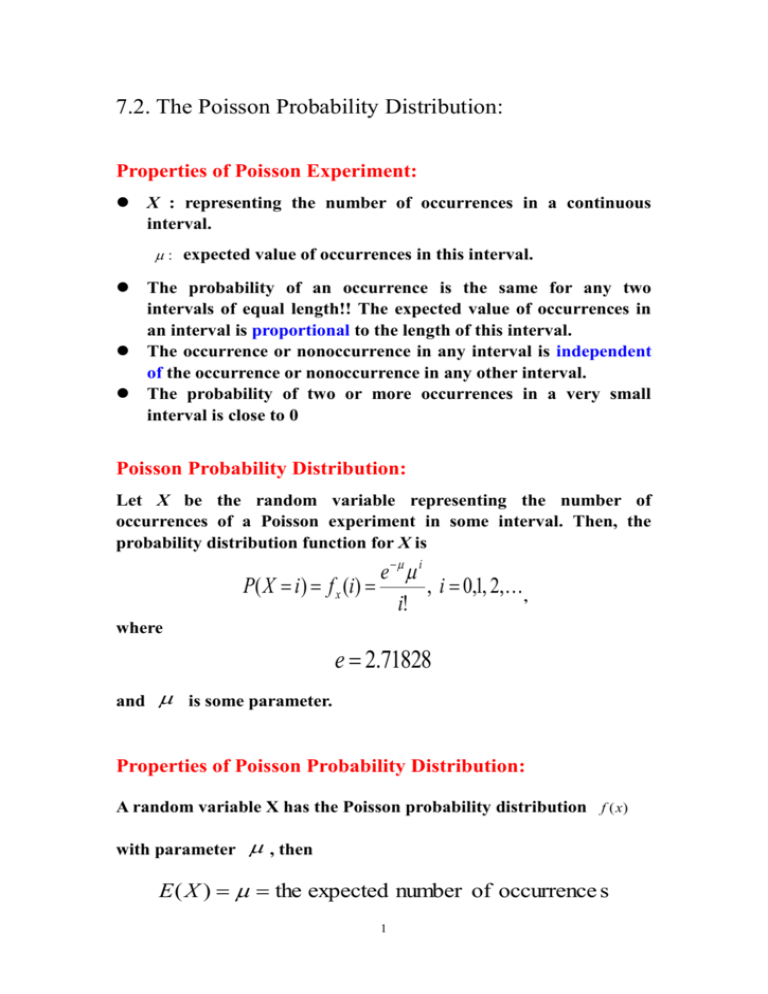
7.2. The Poisson Probability Distribution: Properties of Poisson Experiment: X : representing the number of occurrences in a continuous interval. : expected value of occurrences in this interval. The probability of an occurrence is the same for any two intervals of equal length!! The expected value of occurrences in an interval is proportional to the length of this interval. The occurrence or nonoccurrence in any interval is independent of the occurrence or nonoccurrence in any other interval. The probability of two or more occurrences in a very small interval is close to 0 Poisson Probability Distribution: Let X be the random variable representing the number of occurrences of a Poisson experiment in some interval. Then, the probability distribution function for X is e i P( X i) f x (i) , i 0,1, 2,, i! where e 2.71828 and is some parameter. Properties of Poisson Probability Distribution: A random variable X has the Poisson probability distribution f (x) with parameter , then E ( X ) the expected number of occurrence s 1 and Var ( X ) . The derivations of the above properties are similar to the ones for the binomial random variable and are left as exercises. Example: Suppose the average number of car accidents on the highway in one day is 4. What is the probability of no car accident in one day? What is the probability of 1 car accidence in two days? [solution:] It is sensible to use Poisson random variable representing the number of car accidents on the high way. Let X representing the number of car accidents on the high way in one day. Then, e 4 4i P( X i) f x (i) , i 0,1, 2, i! and E( X ) 4 . Then, e 4 4 0 P( No car accident in one day) P( X 0) f x (0) e 4 0.0183 0! Since the average number of car accidents in one day is 4, thus the average number of car accidents in two days should be 8. Let Y represent the number of car accidents in two days. Then, e 8 8i P(Y i) f y (i) , i 0,1, 2, i! and E (Y ) 8 . Then, 2 e 8 81 P(1 car accidents in two days) P(Y 1) f y (1) 8e 8 0.002 1! Example: Suppose the average number of calls by 104 in one minute is 2. What is the probability of 10 calls in 5 minutes? [solution]: Since the average number of calls by 104 in one minute is 2, thus the average number of calls in 5 minutes is 10. Let X represent the number of calls in 5 minutes. Then, e 1010i P( X i) f x (i) , i 0,1, 2, i! and E ( X ) 10 . Then, e 101010 P(10 calls in 5 minutes) P( X 10) f x (10) 0.1251 . 10! How to obtain the Poisson probability distribution: (a) Using table of Poisson distribution. (b) Using computer by some software, for example, Excel or Minitab. Online Exercise: Exercise 7.2.1 Exercise 7.2.2 3
